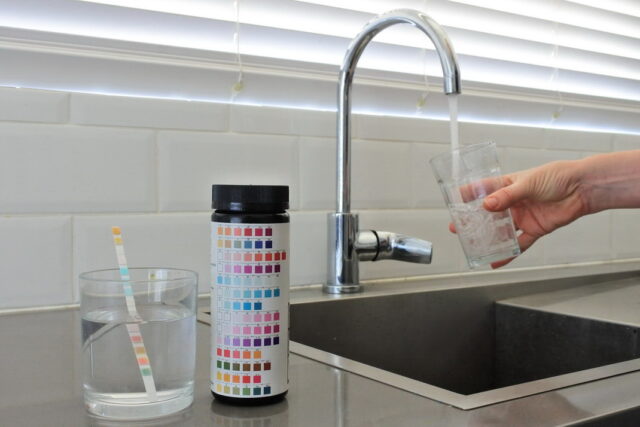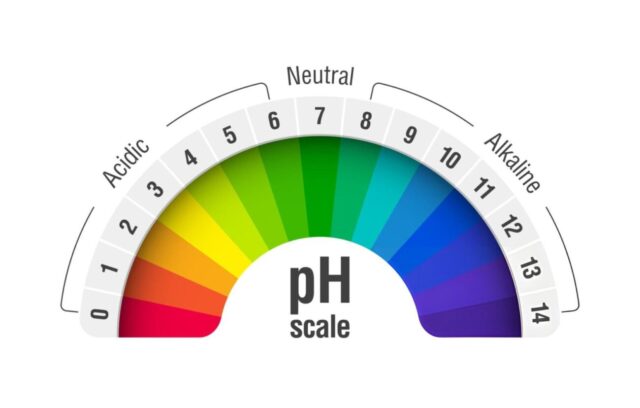
Home water softeners and purifiers are good tools for ensuring high-quality water from the tap. Both can have an impact on water pH, though a water softener’s impact is minimal. But does pH really matter? Yes. It matters both for human health and water’s effect on appliances.
The pH level of the water in your home is a measurement of its acidity level. A lower pH indicates more acid in the water; a higher pH suggests alkaline water. Ideally, tap water should be neutral. Too much acid or alkaline isn’t good.
A 14-Point Range
If you took chemistry in high school, you might remember measuring pH with those little paper strips. You dipped a strip in a liquid and watched to see what color it would turn. One color would indicate acid and the other alkaline. Measuring pH levels in tap water is a little more sophisticated, but not by much.
Science relies on a 14-point scale to measure pH. Neutral water comes in at 7. A lower number leans toward acidity while a higher number leans toward alkalinity. Ideally, tap water should measure somewhere between 6.5 and 8.5.

Why Low pH Matters
With the basics out of the way, we can move on to why low pH matters. The lower the pH level in tap water, the more acid in that water. Understand that a certain level of acid is normal in groundwater. We expect at least some in our tap water, but not too much. Here are the effects of water that is too acidic:
- Corrosion – Extremely low pH water can do a real number on your plumbing. Acid aggressively corrodes metal pipes and fixtures. It can do significant damage to water heaters, dishwashers, boilers, etc. Inevitably, it causes leaks.
- Appliance lifespan – Consistent exposure to acidic water will almost always shorten the lifespan of an appliance. Dishwashers and washing machines won’t last as long. Neither will water heaters. Even the icemaker in your freezer is likely to give out earlier than normal if the water is too acidic.
- Health risks – Consistent exposure to low pH water can introduce toxic metals into the body. This creates unnecessary risks for kids, people with chronic health issues, and pregnant women.
Some of the telltale signs of highly acidic water include blue-green stains, metallic-tasting water, and pinhole pipe leaks.
Why High pH Matters Too
While low pH water creates more risk, high pH water is no picnic, either. Water with too much alkaline encourages scaling and mineral deposits. Put another way, alkaline water tends to lead to calcium and magnesium buildup. It also promotes soap scum in showers and tubs.
High pH water does not taste very good to most people. It can taste bitter or soapy. Excess alkaline is also known to irritate skin, scalp, and hair. And of course, too much alkaline can lead to buildups that create all sorts of plumbing problems.

Water Softeners and Purifiers
As for water softeners and purifiers, they can impact pH level. Salt Lake City’s Superior Water & Air says that water softeners have a minimal direct impact because of the main function of removing calcium and magnesium. However, water purifiers can have a significant direct impact. For example, a water purifier relying on reverse osmosis could increase acid levels in tap water. That is why so many models include a built-in remineralization system.
Tap water pH levels are important. Neutral water is best for both human health and plumbing. If you’re concerned about the tap water in your home, you can always have it tested.



